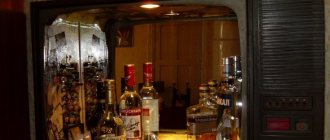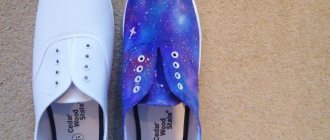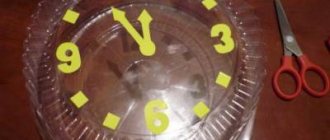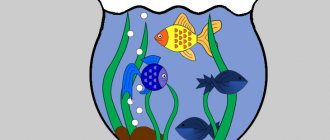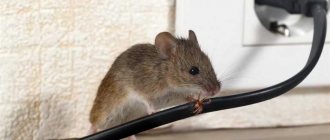All the guys were interested in technology when they were children. We collected Turbo candy wrappers and argued about which car was cooler. By the way, the coolest piece of technology in my childhood was the speedometer. More precisely, what maximum numbers were written on it. Now we remember this with a smile.
One day, on TV, one of my friends saw miracle technology as a buggy. After what we saw, we all decided to get ourselves such a monster. The real solution to getting a buggy was to make it yourself.
One of the friends wanted to steal a walk-behind tractor from his father while he left it in the garage. I don’t think it’s worth mentioning what scolding he received later.
Although we will talk about this technique in more detail later. Not about scolding, but about how to make a buggy from a walk-behind tractor. They carried all sorts of scrap metal for the frame. But nothing really worked out for a bunch of schoolchildren.
We all grew up, and this dear beast remained a childhood dream. This material will be dedicated to those who have not said goodbye to this dream. For those who also want to get their own buggy, consider the options on how to make it yourself.
To begin with, I would like to remind you what a buggy is. This is a car that has no load-bearing body parts. That is, after riding it you will need wet wipes.
Its wheels are slightly larger than standard car wheels. Such cars conquer sand dunes and mud. In general, everything that a regular passenger car cannot overcome.
Buggy types
There are two types of buggies - tourist and sports. Tourist – has space for a passenger. A sports buggy must be reinforced with an additional frame. The car itself should not weigh more than 300 kilograms.
Before you start making buggies with your own hands, you need to study all the drawings in detail. In general, in any work you need to study it before starting, because mistakes in the work can lead to incorrect work.
Tools
After you have studied the theory, you need to collect the necessary tools:
- welding is the most necessary of them;
- pipes;
- engine;
- pipe bender By the way, before purchasing it or taking it for use, you need to clarify what maximum thickness of pipes can be used with this tool;
- Bulgarian;
- drill;
- boards.
Engine
The choice of engine depends on how powerful you need your buggy. Previously, I told you about how my friends and I wanted to convert a walk-behind tractor into a buggy.
So, the engine from a walk-behind tractor is suitable if you do not need a super-fast car.
Such engines have an advantage over moped engines in that you do not need to purchase a separate tank and muffler.
What engine is on the go-kart?
The most suitable internal combustion engine for karting is a chainsaw engine and a trimmer (lawn mower). After disassembling the saw, all unnecessary parts must be removed from its engine: handle, chain, tank, etc.
The difficulty here arises in remaking the sprocket. You need to sharpen the teeth of the chainsaw sprocket a little. Two holes must be drilled in the cooling system casing for mounting to the subframe.
The internal combustion engine of a go-kart is installed at the rear. To do this, you need to weld a thick plate on the back of the frame. The motor must be secured so that its sprocket is in the same plane as the wheel sprocket.
If you buy all the necessary parts in the store, it may be more advisable to buy a ready-made kart racing unit right away.
One of the car map options looks like this:
Frame
It is best to start making buggies with your own hands from such a part as the frame, because we will install everything else on it. To make it, we took pipes. It's not that difficult to make. It is necessary to do everything according to the schemes step by step.
If you are afraid of ruining the buggy frame with your own hands, then there are a huge number of videos of its making on the Internet. The main thing to remember is that when welding, metal tension occurs and you need to pay attention so that your future body does not move.You can make a buggy body with your own hands in different versions, both a little smaller and a little larger. The first option - and you have a mini buggy, the second, and with an additional seat - you have a tourist buggy. I repeat - the main thing is to do everything according to the schemes.
Karting project
The materials you need to assemble a mini car can be bought cheaply at a salvage yard or bought new.
You will need the following parts:
- steering wheel (for convenience, it is better to buy a ready-made braid for the steering wheel made of leather, fur or wire);
- armchair;
- pedals;
- steering column (shaft);
- steering knuckles;
- steering rods;
- pins;
- axle shafts;
- pedal mounting block;
- master and working cylinders of disc brakes;
- wheels.
It’s better to get the seat from a foreign car to make it more comfortable to drive. Such old rotating parts as the kingpin and steering knuckles must be checked for functionality so that they do not jam. Check brake cylinders, tubes and hoses for leaks. The remaining parts should preferably not be rusty.
At scrap metal collection points (scrap of non-ferrous and ferrous metals) you can buy the following parts inexpensively:
- metal sheets, strips, tubes;
- bearings;
- gears;
- chains;
- wheels;
- motor.
To represent the kart device, it is advisable to have a diagram or drawing of the kart project.
There are no clear dimensions for amateur cars. Everyone does at their own discretion, chooses the sizes for themselves. The main criterion for designing a go-kart is the height of the person who will be driving it. Better yet, install a chair with a slide to adjust the length of the pedals. Rather than drawing up a diagram from scratch, it is better to download a ready-made project on the Internet and modify it, change some dimensions.
For steering rods of homemade karts, steel rods with a diameter of 8 to 15 mm are usually used. The steering pendulum is made from a metal plate 5-7 mm thick.
The general finished drawing looks like this:
Dimensions can be changed, but it is better to stick to standard sizes so that the dynamic and technical characteristics do not change.
- The usual overall dimensions of a karting for a teenager are: length - 1.3 meters; width - 0.76 meters.
- Overall dimensions of a mini sports car for an adult: length - 1.8 meters; width - 1 meter.
With a kart length of 1.32 meters, the longitudinal distance between the front and rear axles ranges from 1.00 to 1.22 meters.
If possible, we buy new parts. So, a list of devices and parts for creating a map with your own hands:
- Transmission, steering and brake systems:
- Transmission;
- hand brake;
- steering wheel;
- wheels;
- steering and drive shafts;
- gas and brake pedals;
- bearings.
- Motor:
- engine (you can use the engine from a chainsaw or lawn mower-trimmer);
- chain;
- gas tank;
- fasteners (bolts, nuts, washers).
- Chassis card:
- 2.5-centimeter square pipe (inch), 9.2 meters long;
- steel pipe with a diameter of 2 cm, a length of 1.8 meters;
- pipe with a diameter of 1.5 cm, a length of 1.8 meters;
- a steel plate slightly larger in size than the engine and 0.5 cm thick;
- metal or plywood for the bottom and seat;
- seat (preferably sports). By the way, it wouldn’t be a bad idea to put a seat with built-in heating on the kart.
In addition to the necessary materials and parts, you will need a welding machine. The kart chassis must be welded with high quality so that the welding seams are not destroyed by vibration.
To purchase all the necessary new materials you will need about 30,000 rubles. But it’s more convenient and easier to make from new parts.
Suspension
The best suspension option for a buggy is independent suspension. If the financial component of the issue allows, then it is better to take the Japanese option.
The independent suspension is mounted with one lever across the car, and the second takes the load upon itself. With this option, the weight of the buggy is distributed evenly.
The front suspension is best done on wishbones in the form of A. This type of design gives more maneuverability to the wheels.
Buggy class 0 on Ant nodes (motorized strollers)
Description of the design and drawings of a class 0 buggy. This machine was described in the Young Technician magazine. Unfortunately, the year and issue number are unknown to me.
Built on the basis of components of a motorized stroller and an IZH motorcycle.
Frame
On racing cars, the frame is not only the basic element of the entire structure, but also a safety cage that reliably protects the driver during collisions and rollovers. Before you start making the frame, carefully read the design of its main elements indicated in the figure.
1 — rear safety bar;
2 - rear slope; 3 — rear arm mounting bracket; 4 — seat mounting bracket; 5 — bushing for fastening the gear shift lever; 6a — bracket for fastening the lower arm of the front suspension; 6b — bracket for fastening the upper arm of the front suspension; 7 — bracket for fastening the upper end of the front suspension shock absorber; 8 — steering gear mounting plate; 9 — steering shaft mounting bracket. According to the dimensions shown in the figures, prepare sections of seamless steel pipes with an outer diameter of 20, 25, 30 and 35 mm and a wall thickness of 2 mm. Their length must first be determined using templates. To ensure that the bends are free of corrugations, the pipes should be tightly packed with sand, heated with a gas torch or blowtorch, and only then bent. Every detail is customizable; in place and slightly tacked by welding. This intermediate operation will allow us to evaluate the entire structure as a whole, and if the need arises, correct any errors. Only after making sure that all frame parts are installed correctly and flush together can you begin the final welding of the entire structure. Make sure that the welding of the elements is of high quality, with complete welding of each seam around the perimeter. To avoid deformation when welding, use a bench (rigid frame) and clamps. To ensure quick evacuation of the car from the highway (according to the KiTT), towing eyes with a diameter of 40 mm must be welded to the front and rear of the frame. Next, prepare the bushings and brackets, but you don’t need to weld them to the frame yet. Perform this operation only after the elements of the front and rear axles and steering have been manufactured. Front suspension The front axle has an independent suspension on double wishbones and elastic elements combined with shock absorbers. This design allows for a large vertical wheel travel, which is very important on cross-country trails.
1 — front wheel hub fastening element; 2 - wheel; 3 - shock absorber; 4 — brake hose; 5 — upper lever; 6a — bracket for fastening the lower arm of the front suspension; 6b — bracket for fastening the upper arm of the front suspension; 7 — machine body; 8 — lower lever; 9 and 11 — elements of the front wheel strut; 10 — shock absorber mounting bracket; 12 — front wheel steering axle. For the front axle, you can use ready-made components and parts from the front suspension of the SZD motorized stroller. We recommend taking hubs, axles, brake drums and wheels, as well as front shock absorbers from a ZAZ-968 Zaporozhets car. All other parts of the front axle will have to be made by hand. The upper lever 5 (see the lower part) can be made from two pieces of steel pipe with a diameter of 20X2 mm. Weld another short one, cut from the same pipe, to the left ends. This operation is necessary because bronze bushings are pressed into them, serving as bearings. Weld a steel pipe with a diameter of 20 mm and a wall thickness of 3 mm to the right, converging ends of the lever and cut an M16 thread in it. With its help it will be possible to adjust the camber of the wheels. The lower lever 8 is also made from two pieces of pipe with a diameter of 25X2 mm. Weld short sections of the same diameter to the left ends of these pipes; bronze bushings must also be pressed into them. Connect the right ends of the lower arm with a gusset, as shown in the figure. Weld brackets 10 to the upper surface of the gusset - shock absorbers will be attached to them. The ends of the pipes must be flattened, and then holes with a diameter of 10 mm must be drilled into them for fastening to the stand 11. The front wheel stand 11 is taken from the SZD motorized stroller. The following changes are made to it. Weld bracket 9 from a steel bar with a diameter of 15 mm to the top of the rack. The upper end of the rod should end with an eye for attaching it to lever 5. The shock absorber, as we said above, is taken from the Zaporozhets car. It is necessary to make an upper mount for it and an additional support for the spring. The spring itself must be selected from heavy motorcycles. Rear suspension The rear axle has an independent suspension, made on oblique levers with elastic elements combined with shock absorbers. This design serves the same purpose - it allows for large vertical wheel travel.
1 — wheel fastening element; 2 — wheel assembly; 3 - shock absorber; 4 — lower part of the rear lever; 5 — cardan shaft; 6 - gearbox; 7 — upper part of the rear lever; 8 — shock absorber mounting bracket; 9 — rear wheel axle; 10 - rear wheel hub mounting flange and 11 - brake shield. The rear lever can be made from steel pipes with a diameter of 36X2 mm and 20X2 mm. Please note: for strength, thin pipes are reinforced with gussets - steel plates 2 mm thick. Weld flange 10 to the right side of the lever. It will have to be turned on a lathe from a steel billet. At the left end of the lever, weld two short sections of pipe with a diameter of 30X2 mm, into which then press rubber and steel spacers. To avoid distortions, weld the lever elements in the jig. The rear wheel axle is made from a part of the shaft from the SZD motorized stroller. Take the forks from the driveshaft of the steering drive of the ZIL-130 car. Connect these parts together by electric welding. The shock absorber together with the spring is taken from the Zaporozhets car of the ZAZ-963 brand. Make the bracket for attaching the shock absorber from a steel strip 3 mm thick. Weld it to the levers. The flanges of the upper shock absorber mounting are welded to the frame using short steel pipes with a diameter of 20x2 mm only after installing the assembled levers. Engine placement First, let's carefully examine this unit (see figure below). Here are its parts: 1 - subframe, 2 and 9 - bolts for mounting the engine, 3 - bolt for attaching the subframe to the frame, 4 - subframe mounting bracket, 5 - clamp, 6 - device for tensioning the chain, 7 - tension bolt, 8 - rubber bushing and 10 elements
The subframe is used to attach the engine to the car frame. You can use it from an SZD motorized stroller, converting it to an engine from a serial Izh-Jupiter motorcycle. To do this, you will need bolts for attaching the engine to the frame, two clamps, and a device for tensioning the chain. The finished subframe is attached to the frame with rubber bushings - they dampen vibration from the engine. The engine is separated from the driver's seat by a fire-resistant partition. All openings for the output of electrical wires, pipelines, parts and control units on our car are made to a minimum size and away from the driver. Steering On our car, we used a rack-and-pinion steering mechanism from an SZD motorized stroller. You can use it too. It should be disassembled and rebuilt as shown in the figure (see below). The numbers indicate: 1 - steering gear rack, 2 - steering gear mounting bracket, 3 - swing arm, 4 - steering joint, 5 - steering rod, b - steering gear mounting plate, 7 - steering gear, 8 - steering wheel shaft mounting element , 9 — steering wheel, 10 — steering wheel shaft, 11 — steering gear shaft.
Using a bracket, the steering mechanism is bolted to the frame. Make the steering wheel shaft from a steel pipe with a diameter of 22 mm and connect it to the steering gear shaft with two bolts with a diameter of 6 mm. To securely attach the steering wheel to the end of the steering shaft, it is necessary to weld a flange with a diameter of 68 mm. The easiest way to make a steering wheel is from a 1.5 mm thick duralumin sheet. But you can also use a card. The final fixation of the steering mechanism on the frame is made only after you make sure that the vertical movement of the wheels is not accompanied by their angular movements. If they appear, we advise you to change the length of the steering rods, adjust the position of the steering mechanism and the installation angles of the swing arms. Engine control system It consists of levers and pedals. Gear shift lever 11 can be made from a steel pipe with a diameter of 20 mm. Select the length of the lever and its installation location according to the driver’s height. Connect the lever to the engine with a rod made of a pipe with a diameter of 14 mm. Make the reverse lever from a steel pipe with a diameter of 20 mm. The drive to the shift lever on the gearbox in the machine is carried out by a steel cable with a diameter of 4 mm. When the car moves along the highway, the shift lever is fixed by a spring, which prevents the gearbox from spontaneously turning off. Make the pedals from a steel pipe with a diameter of 12 mm and sheet steel 2 mm thick. The final attachment of the pedals to the car frame is made only after installing the seat and steering wheel in order to select their most convenient position. Power and exhaust system The main components of the power and exhaust system are shown in the figure: 1 - fuel tank, 2 - fuel pump, 3 - fuel pump mount, 4 - fuel line, 5 - carburetor damper control cable, 6 - carburetor, 7 - exhaust pipe mount , 8 - air filter, 9 - filter mount and 10 - exhaust pipes.
The fuel tank is installed behind the driver's seat. Fuel is supplied to the carburetor using two vacuum fuel pumps. On the engine of our car we installed a carburetor from the Czechoslovak cross-country motorcycle “ChZ” with a diffuser diameter of 36 mm. To connect the pumps to the engine bypass channels, we had to drill holes in the wall of the channels, cut threads and screw in fittings, as shown in the figure. And secure the pumps themselves to the car frame using a rubber strip. The inlet pipe is standard. True, its flow area needs to be slightly increased by boring out the walls with a file. After this operation, be sure to blow out the pipe with compressed air to remove sawdust from it. The air filter can be taken from a ChZ motorcycle by making a special mount for it from a duralumin blank. The filter and carburetor are attached to the engine through rubber adapters. The fuel line can be a vinyl chloride or rubber tube with an internal diameter of 4 or 5 mm. It is advisable to make exhaust pipes from sheet steel 0.8 mm thick. But you can take a muffler from a motorcycle - it has less effect on engine power. It is important that the noise level is reduced to 100 dB. The end parts of the exhaust pipes are located at a height of no more than 600 mm from the ground surface and protrude beyond the extreme point of the vehicle by no more than 250 mm.
Ignition system, lighting equipment
The numbers indicate: 1 - magneto, 2 and 3 - gearbox mounting brackets, 4 - drive chain, 5 - rear axle gearbox, 6 - fuel supply tube to the cylinder heads, 7 - spark plug, 8 - water supply tube and 9 - fuel tank water. We installed a two-spark magneto on the Izh-Jupiter engine. It was connected to the crankshaft through a rubber coupling. The use of a magneto ensures the reliability of the ignition system in all engine operating modes. To stop the engine, it is necessary to remove the magneto from the low-voltage winding and from ground through an insulated wire and connect them to the switch. Our car uses PAL-13-14 spark plugs. The required ignition timing is set in the range of 2.3-2.5 mm. Our car, in accordance with KiTT requirements, is equipped with side lights, brake lights and sound signals powered by a battery. The brake lights are turned on (see figure above) by a sensor of the brake system hydraulic drive system. The side lights are turned on by a toggle switch, and the sound signal is turned on by a button. Cooling system The engine cooling system uses (see figure above) the supply of a small amount of water by gravity through tube 6 with holes with a diameter of 0.5 mm from tank 9. And the tank itself is attached to the frame with clamps made of a 2 mm thick steel strip. Rear axle gearbox It can be taken from the SZD motorized stroller. Install the gearbox on brackets 2 and 3 of the subframe. The drive from the engine to the gearbox is transmitted by chain 4, the tension of which is carried out by a tensioner, as shown in the figure (see above). External panels The car skin is made of sheet duralumin 0.5-1 mm thick. In order for the blanks to fit better to the frame, we advise you to first cut out templates from thick paper and fit them in place. Only after this operation proceed to the manufacture of sheathing elements. Cut the blanks according to the markings using metal scissors. Fasten the finished trim elements to the frame with screws and nuts, as shown in the figure: 1 - front side trim, 2 - bottom, 3 - front shield, 4 - front fenders, 5 - front fender bracket, 6 - hood cover, 7 - mirror mount rear view, 8 — protective mesh, 9 — top screen, 10 — license plate, 11 — rear fender, 12 — rear fender bracket, 13 — mudguard, 14 — side protective bumper, 15 — side trim, 16 — front fender bracket and 17 - sheathing element. Using strap clamps, install the protective mesh on the front arch. Its cell size is 25X25 mm, and the diameter of the steel wire is 1 mm. The bracket for attaching the rear wings to the frame is made locally from a pipe with a diameter of 20 mm, and the brackets for attaching the front wings are made from a torsion bar from the front axle of the SZD motorized stroller. The wings of the car can be made of steel sheet 1.5 mm thick and edged around the perimeter with a rubber seal, which is used to seal doorways on a GAZ-24 car. Install additional mud flaps made of sheet rubber 5 mm thick on the mounting brackets for the rear wings. The lower edges of the mudguards are located no higher than 200 mm from the road and cover the entire width of the wheels. The side bumpers do not protrude beyond the lines connecting the outer sides of the wheels. To attach two rear-view mirrors, it is necessary to make brackets from a steel bar with a diameter of 10 mm. After complete assembly, the car's upholstery should be painted in bright colors. It must bear the appropriate inscriptions: starting numbers, designation for turning on the fire extinguishing system, ignition switch, driver's last name, his blood type and Rh factor, as well as an emblem or inscription indicating membership in a sports team. Brake system
1 - brake pedal, 2 - gas pedal, 3 - main brake cylinder, 4 - tee, 5 - brake hose fitting, 6 - brake hose, 7 - brake, 8 - brake system feed tank, 9 - bracket, 10 - tension drive brakes, 11 — gear shift lever, 12 — headrest, 13 — seat belts, 14 — brake pipes, 15 — seat, 16 — clutch drive, 17 — carburetor flap control drive, 18 — wheel brake cylinder, 19 — pedal travel limiting device with a return spring, 20 - parking brake cable, 21 - roller and 22 - brake pads. All components of the brake system are used from the SZD motorized stroller, except for the front brake hoses, which can be taken from the GAZ-53 car. For greater reliability, we recommend installing a dual-circuit brake system, using a cylinder from a Moskvich or Zhiguli car as the main brake cylinder. In this case, an independent drive acting on the foot brake pedal can be used as a parking brake. For this purpose, we used a handbrake drive with fixed positions from a GAZ-24 car. If the braking system is not dual-circuit, then you will have to make an independent mechanical drive for the parking brake. Wheel tires must comply with KiTT. Let us remind you that they should not have mechanical damage, and the tread height should exceed 3 mm. The use of tires with a pattern restored from a worn tread is prohibited. As an exception, the use of tires retreaded by welding is permitted only for rear axle tires. It is also prohibited to use all anti-slip devices (chains, bracelets and spikes). You cannot install tires from agricultural machines and tractors. Driver's seat We have adapted an anatomical seat from a kart. Although in principle you can use any other. The main thing is that the seat is securely fastened to the frame. The KiTT requirements provide for automobile-type seat belts with four points of attachment to the frame. The seat on our car, at the level of the driver's helmet, is equipped with a headrest. It is a 2 mm thick duralumin plate covered with foam rubber and leatherette. Consists of a fire extinguisher and guide pipes. One is aimed at the engine, the other at the driver. A fire extinguisher with a mass of extinguishing agent of 3 kg is installed to the right of the driver and has two activation levers: one accessible to the driver sitting behind the wheel with seat belts fastened, the other outside, on one of the main safety arches. The fire extinguisher is attached to the frame using clamps made of steel tapes. The location of the fire extinguishing system activation lever is indicated by the letter E in the middle of a red circle with a diameter of 150 mm. Technical characteristics: Izh-Jupiter engine, uprated. Cylinder displacement is 347.6 cm3, compression ratio is 10.5. Maximum power - 35 hp at 7000 rpm. Ignition from magneto KATEK-M-149. Carburetor Ikov 2936 S. Maximum speed - 80 km/h. Weight - 250 kg. Overall dimensions: height - 1280 mm, length - 2500 mm, width 1380 mm. Wheelbase - 1950 mm, track - 1200 mm, ground clearance - 250 mm. Turning radius - 2.5 m. Front suspension travel - 210 mm, rear - 200 mm. Brakes - hydraulic with 4-wheel drive.
Installation
If you did everything before according to the drawings, then you should end up installing the engine on your buggy with your own hands. The cable version of the gas, which is on the engine of a walk-behind tractor, does not need to be removed. This option will be easier for you to install than to redo everything on the pedal.
After installing the engine, you can make the bottom of your buggy. You can, of course, do without it. By the way, the very first buggies were made without it, but additional protection will not be superfluous.
After this, install the seat. Here, for whom is it more convenient, but it is worth remembering that it is better not to use the OKA car. It is very tough, and we will experience various obstacles on it.In general, your car is already ready. If you plan to use it on the roads, then it’s worth adding a bumper, turn signals, and headlights.
Before conquering serious peaks with such a buggy, it is worth testing it on smooth roads. We need to see how he behaves.
If all is well, then you are ready to become the king of the most impassable puddles and peaks. Be prepared to receive looks of admiration and dismay. And most importantly, the attention of all the children in the area will be yours.
Photo of the buggy assembly process:
Making the frame.
Front lever.
The rear lever is a fist from 2108 with a welded pipe and amplifier.
Engine installation.
The engine mounts are made of jet rods from a classic VAZ.
Pedal assembly, main brake from 09, without amplifier, main clutch from classics.
Among the advantages, it can be noted that a person with a height of 195 fits freely, there is about 150 mm of space above the head, and the legs are also not cramped.
Now for the shortcomings. Due to the configuration of the front levers, the angle of rotation of the wheels is somewhat limited, sometimes not enough. The wheelbase is too big, which makes it difficult to turn the wheels, but when skidding, it’s quite easy to control.
When installing the engine, special attention must be paid to the operation of the left (short) inner CV joint during the suspension stroke in compression and rebound, because the angle of his work is close to critical. It might make sense to tilt the engine a little to the left, as was done in the B2908.
When attaching the rear struts, you need to make sure that during the compression stroke they do not touch the edge of the wheel rim.


